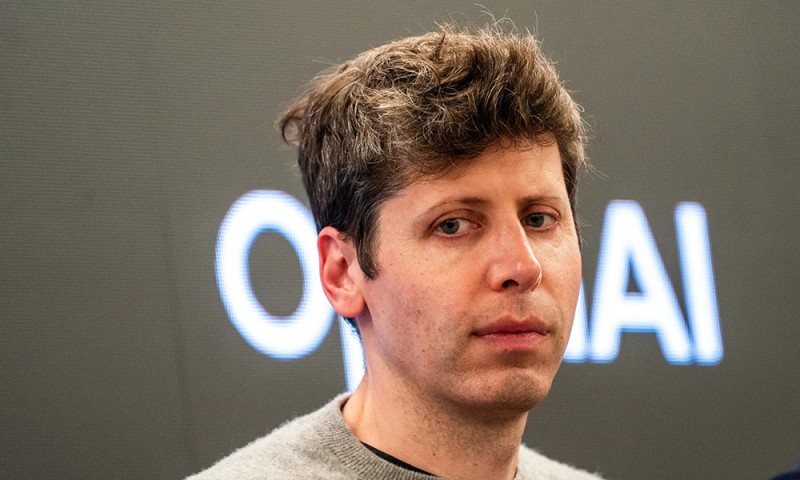
OpenAI正规划截至本十年末的盈利逆袭之路,但实现增长需经历阵痛期。《华尔街日报》获取的财务文件显示,该公司预计未来数年将持续面临巨额亏损,仅2028年就将出现约740亿美元的运营亏损,随后将在2030年前实现爆发式盈利。
今年夏季向投资者披露的文件显示,其激进增长战略依赖前期在计算基础设施、芯片及数据中心的巨额投入。CEO萨姆·奥尔特曼称,要满足其眼中“对人工智能能力永无止境的需求”,这一支出必不可少。该公司预计今年销售额将达到130亿美元,同期现金消耗约为90亿美元,现金消耗率约占营收的70%。
但财务状况在出现好转前将进一步恶化。文件显示,受算力成本飙升推动,OpenAI预计到2028年,其运营亏损将增至当年营收的四分之三左右。据《华尔街日报》报道,竞争对手Anthropic则预计在同年实现盈亏平衡。
这些数字凸显了两大最具价值人工智能初创企业之间的巨大分歧。尽管两家公司当前的现金消耗率(相对于营收)相近,但未来发展路径截然不同。Anthropic预计2026年现金消耗率将降至营收的三分之一左右,到2027年进一步降至9%。相比之下,OpenAI预计2026年和2027年的现金消耗率仍将维持在57%。
OpenAI的计划本质上是一场对“行业主导地位”的豪赌。该公司近期宣布,在未来八年里,已与云计算及芯片巨头签署总额高达1.4万亿美元的计算服务协议。仅为应对未来产品和研发的潜在需求,其备用数据中心容量投资就接近1000亿美元。
OpenAI发言人向《华尔街日报》表示:“当前人工智能需求已超过现有计算资源供给。我们投入人工智能基础设施的每一美元,都用于服务数亿依赖ChatGPT提升工作效率的消费者、企业和开发者。”
OpenAI未立即回应《财富》杂志置评请求。
奥尔特曼为OpenAI制定的战略需要持续融资以维持公司运转,但如果市场对人工智能或其短期盈利能力的信心下降,那么该战略可能适得其反。近几周,出于对人工智能领域过高支出的顾虑,加之担忧相关营收难以支撑大规模基础设施建设,投资者已抛售美股科技巨头股票。
这些财务数据是在OpenAI签署一系列新计算服务协议之前披露的,这意味着公司实际支出可能超出文件预期。据The Information报道,预计到2029年,OpenAI累计现金消耗将达1150亿美元。
该公司对最终实现扭亏为盈的乐观预期,建立在营收将实现爆发式增长的预测之上。预计到2030年,OpenAI年营收将达到约2000亿美元,且将在2029年或2030年实现正向现金流。这些数字较此前向投资者披露的预测大幅提升。
OpenAI首席财务官莎拉·弗里尔(Sarah Friar)上周表示,公司利润率状况良好,若有意向,完全可以实现盈亏平衡。她强调了OpenAI企业业务的快速增长,并指出这家初创公司仍在探索新商业模式。
奥尔特曼为巨额基础设施投入辩护,称这是战略必需。
“我们认为OpenAI面临的算力不足风险,远比算力过剩风险更为突出,且发生概率更高。”他上周在X平台(原推特)发文称。
OpenAI与Anthropic的战略差异,折射出人工智能热潮下两种截然不同的发展理念。Anthropic成本增速更贴近营收增速,且专注于提升企业客户销售额(占其营收的80%左右)。值得注意的是,Anthropic正规避OpenAI在图像与视频生成领域的高成本尝试——这类业务需要消耗大量算力资源。OpenAI新推出的视频创作应用Sora 2,据称每日成本可能高达数百万美元。
与此同时,OpenAI正加速业务多元化布局。该公司近期推出了Sora 2模型及其首款网页浏览器Atlas,同时正与乔纳森·艾维(Jony Ive)的设计公司合作开发消费级硬件设备,开展人形机器人研发,并计划为ChatGPT添加电商与广告功能。OpenAI的豪赌能否成功,取决于市场对其产品的需求能否继续以足以支撑这笔前所未有的开支的速度增长。据测算,在实现盈利前,该公司的现金消耗预计将达到Anthropic的约14倍。(*)
《财富》杂志使用生成式人工智能完成初稿,经编辑核实信息准确性后发布。
译者:中慧言-王芳
OpenAI正规划截至本十年末的盈利逆袭之路,但实现增长需经历阵痛期。《华尔街日报》获取的财务文件显示,该公司预计未来数年将持续面临巨额亏损,仅2028年就将出现约740亿美元的运营亏损,随后将在2030年前实现爆发式盈利。
今年夏季向投资者披露的文件显示,其激进增长战略依赖前期在计算基础设施、芯片及数据中心的巨额投入。CEO萨姆·奥尔特曼称,要满足其眼中“对人工智能能力永无止境的需求”,这一支出必不可少。该公司预计今年销售额将达到130亿美元,同期现金消耗约为90亿美元,现金消耗率约占营收的70%。
但财务状况在出现好转前将进一步恶化。文件显示,受算力成本飙升推动,OpenAI预计到2028年,其运营亏损将增至当年营收的四分之三左右。据《华尔街日报》报道,竞争对手Anthropic则预计在同年实现盈亏平衡。
这些数字凸显了两大最具价值人工智能初创企业之间的巨大分歧。尽管两家公司当前的现金消耗率(相对于营收)相近,但未来发展路径截然不同。Anthropic预计2026年现金消耗率将降至营收的三分之一左右,到2027年进一步降至9%。相比之下,OpenAI预计2026年和2027年的现金消耗率仍将维持在57%。
OpenAI的计划本质上是一场对“行业主导地位”的豪赌。该公司近期宣布,在未来八年里,已与云计算及芯片巨头签署总额高达1.4万亿美元的计算服务协议。仅为应对未来产品和研发的潜在需求,其备用数据中心容量投资就接近1000亿美元。
OpenAI发言人向《华尔街日报》表示:“当前人工智能需求已超过现有计算资源供给。我们投入人工智能基础设施的每一美元,都用于服务数亿依赖ChatGPT提升工作效率的消费者、企业和开发者。”
OpenAI未立即回应《财富》杂志置评请求。
奥尔特曼为OpenAI制定的战略需要持续融资以维持公司运转,但如果市场对人工智能或其短期盈利能力的信心下降,那么该战略可能适得其反。近几周,出于对人工智能领域过高支出的顾虑,加之担忧相关营收难以支撑大规模基础设施建设,投资者已抛售美股科技巨头股票。
这些财务数据是在OpenAI签署一系列新计算服务协议之前披露的,这意味着公司实际支出可能超出文件预期。据The Information报道,预计到2029年,OpenAI累计现金消耗将达1150亿美元。
该公司对最终实现扭亏为盈的乐观预期,建立在营收将实现爆发式增长的预测之上。预计到2030年,OpenAI年营收将达到约2000亿美元,且将在2029年或2030年实现正向现金流。这些数字较此前向投资者披露的预测大幅提升。
OpenAI首席财务官莎拉·弗里尔(Sarah Friar)上周表示,公司利润率状况良好,若有意向,完全可以实现盈亏平衡。她强调了OpenAI企业业务的快速增长,并指出这家初创公司仍在探索新商业模式。
奥尔特曼为巨额基础设施投入辩护,称这是战略必需。
“我们认为OpenAI面临的算力不足风险,远比算力过剩风险更为突出,且发生概率更高。”他上周在X平台(原推特)发文称。
OpenAI与Anthropic的战略差异,折射出人工智能热潮下两种截然不同的发展理念。Anthropic成本增速更贴近营收增速,且专注于提升企业客户销售额(占其营收的80%左右)。值得注意的是,Anthropic正规避OpenAI在图像与视频生成领域的高成本尝试——这类业务需要消耗大量算力资源。OpenAI新推出的视频创作应用Sora 2,据称每日成本可能高达数百万美元。
与此同时,OpenAI正加速业务多元化布局。该公司近期推出了Sora 2模型及其首款网页浏览器Atlas,同时正与乔纳森·艾维(Jony Ive)的设计公司合作开发消费级硬件设备,开展人形机器人研发,并计划为ChatGPT添加电商与广告功能。OpenAI的豪赌能否成功,取决于市场对其产品的需求能否继续以足以支撑这笔前所未有的开支的速度增长。据测算,在实现盈利前,该公司的现金消耗预计将达到Anthropic的约14倍。(*)
《财富》杂志使用生成式人工智能完成初稿,经编辑核实信息准确性后发布。
译者:中慧言-王芳
OpenAI is plotting a dramatic arc toward profitability through the end of the decade, but that growing won’t come without some pain. The company reportedly expects to rack up massive annual losses each year, including roughly $74 billion in operating losses in 2028 alone, then pivot to meaningful profits by 2030, according to financial documents obtained by The Wall Street Journal.
The documents, which were shared with investors this summer, reveal an aggressive growth strategy that hinges on massive upfront investment in computing infrastructure, chips and data centers—spending that CEO Sam Altman has described as necessary to meet what he sees as insatiable demand for AI capabilities. The company anticipates burning through roughly $9 billion this year on $13 billion in sales, a cash burn rate of approximately 70% of revenue.
But the financial trajectory only gets steeper before it improves. The documents show OpenAI projects that by 2028, its operating losses will balloon to roughly three-quarters of that year’s revenue, driven primarily by ballooning spending on computing costs. That’s the same year competitor Anthropic expects to break even, according to WSJ.
The numbers underscore the stark divergence between the two most valuable AI startups. While both companies currently burn cash at similar rates relative to revenue, their paths forward split dramatically. Anthropic forecasts dropping its cash burn to roughly one-third of revenue in 2026 and down to 9% by 2027. OpenAI, by contrast, expects its burn rate to remain at 57% in 2026 and 2027.
OpenAI’s plan relies on what amounts to a bet on dominance. The company recently announced it has signed up to $1.4 trillion in commitments over the next eight years for computing deals with cloud and chip giants. It’s spending almost $100 billion on backup data-center capacity alone to cover unforeseen demand from future products and research.
“Demand for AI exceeds available compute supply today,” an OpenAI spokesman told WSJ. “Every dollar we invest in AI infrastructure goes to serving the hundreds of millions of consumers, businesses, and developers who rely on ChatGPT to get more done.”
OpenAI did not immediately respond to Fortune‘s request for comment.
Altman’s strategy for OpenAI requires near-constant fundraising to keep the startup alive, but could backfire if markets cool on AI or its near-term profitability. Investors have already punished tech companies in recent weeks over concerns about AI spending and whether there will be enough revenue to pay for the extensive AI infrastructure buildout.
OpenAI’s financial figures came before it signed its most recent computing deals, meaning the company is likely set to spend even more than the documents suggest. The cash burn is expected to reach $115 billion cumulatively through 2029, according to The Information.
The company’s optimism about an eventual turnaround rests on revenue projections that show explosive growth. OpenAI now expects to reach about $200 billion in annual revenue by 2030, with the company projecting it will turn cash flow positive beginning in 2029 or 2030. Those figures represent substantial increases over earlier projections shared with investors.
OpenAI Chief Financial Officer Sarah Friar said last week the company has healthy margins and could break even if it wanted to. She highlighted the fast growth of OpenAI’s enterprise business, and said the startup was still experimenting with new business models.
Altman has defended the massive infrastructure spending as a strategic necessity.
“We believe the risk to OpenAI of not having enough computing power is more significant and more likely than the risk of having too much,” he posted last week on X.
The contrasting approaches between OpenAI and Anthropic illustrate two distinct philosophies for navigating the AI boom. Anthropic’s costs are growing at a pace more in line with revenue, and the company is focused on increasing sales among corporate customers, which account for about 80% of its revenue. Notably, Anthropic is trying to avoid OpenAI’s costly forays into image and video generation, which require significantly more computing power. Sora 2, OpenAI’s new video-creation app, might be costing the company millions each day.
OpenAI, meanwhile, is diversifying rapidly. The company recently launched Sora 2 and its first web browser, Atlas. It’s also working on a consumer hardware device with Jony Ive’s design company, researching humanoid robots, and looking to add e-commerce and advertising features for ChatGPT. Whether OpenAI’s gamble pays off will depend on whether demand for its products continues to surge at the pace needed to justify the unprecedented spending. The company expects to burn through roughly 14 times as much cash as Anthropic before turning a profit.
For this story, Fortune used generative AI to help with an initial draft. An editor verified the accuracy of the information before publishing.

